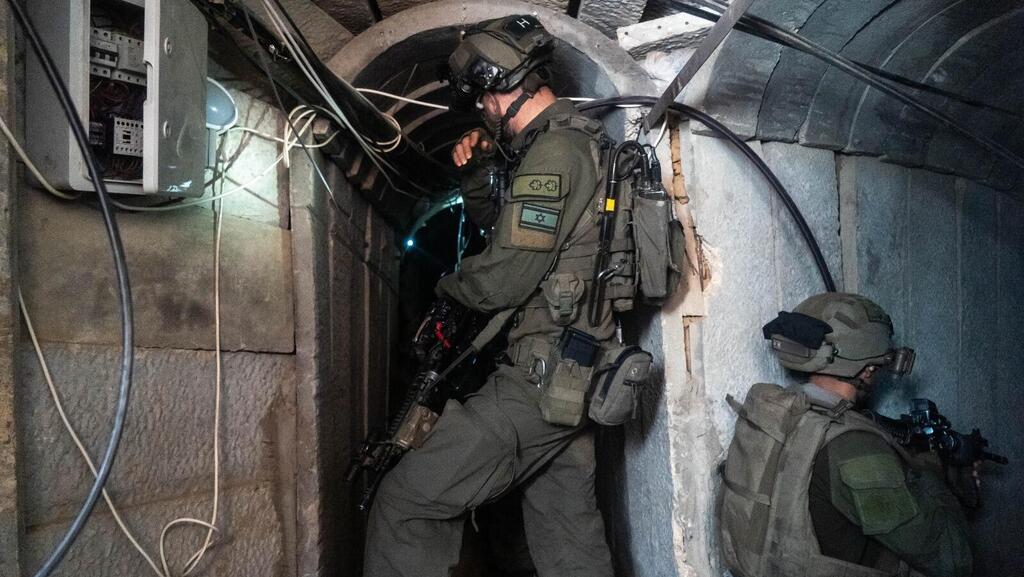Some 80% of the Hamas tunnel system beneath Gaza remains intact, the Wall Street Journal reported on Sunday, quoting Israeli and American officials.
Read more:
"U.S. and Israeli officials have had difficulty precisely assessing the level of destruction of the tunnels, in part because they can’t say for certain how many miles of tunnels exist," the papers said adding that officials from both countries estimate 20% to 40% of the tunnels have been damaged or rendered inoperable, most of them in northern Gaza.
2 View gallery


IDF troops enter tunnel shaft in Gaza where rocket production facilities were found
(Photo: IDF)
“Hamas’s strategy revolves around the tunnels—it is their center of gravity. They needed the tunnels to level the battlefield with the IDF,” said Mick Mulroy, a former deputy assistant secretary of defense and officer in the Marine Corps and Central Intelligence Agency. “The tunnels are where Hamas planned [before Oct. 7] to wait out Israel’s political will as Israel faced pressure for a cease-fire.”
According to the paper, an Israeli official said the difficulty was the concern that hostages held in the tunnels, where Hamas leaders are believed to be hiding, would be hurt when troops attempt to enter and destroy them. “It’s a very hard mission. It’s done slowly, very carefully. It’s urban warfare unseen globally,” the official said.
The WSJ report said the “Sea of Atlantis” plan to pump sea water into the tunnels and render them unusable was not successful and in at least one instance, the military used fresh water in a tunnel in Khan Younis.
An Israeli source told the paper that some of the hostages are believed held in A Hamas command and control center in a tunnel under Khan Younis where Sinwar may also be hiding. He said the military's efforts are to clear intersections inside the tunnel system and not destroy it entirely adding that the work is being done slowly and carefully in what is the first of its kind urban warfare.


